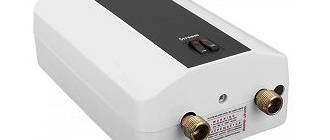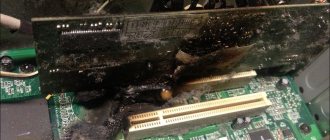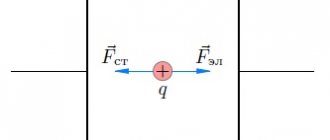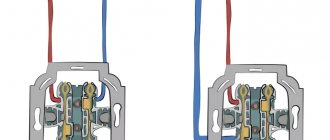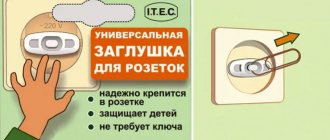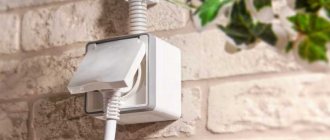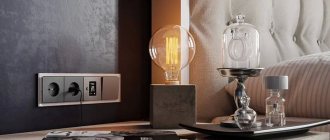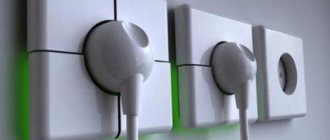In a home where small children are raised and raised, you always need to be careful with various dangerous objects, as well as types of thermal or electrical energy. If medications that are dangerous to a growing organism or turning on gas burners can be reliably closed, hidden or blocked, then such options will not work with such a type of danger as electricity.
The main danger of tension for the human body of any age is that it does not have any smell, and it cannot be heard or seen. To determine the voltage on conductive elements, special devices are used.
For children, the main danger is sockets, which, with their curiosity, for some reason they most want to explore. To protect the little ones, special plugs are used in sockets.
A child sometimes shows miracles in his ingenuity, so the choice of this protective mechanism should be approached with all responsibility and seriousness, after all, the life of an unintelligent tomboy depends on it.
Effective protection and features for choosing the right outlet plugs
Here are some criteria that we recommend taking a closer look at:
- Quality plastic, stability. This means that it is not allowed to purchase products made from fragile materials.
- Strong position of sealing inserts.
- Fastening and additional elements must match the socket itself. For installation indoors and outdoors, with or without grounding.
- Socket type. Each variety has its own modification of plugs.
Helpful advice
It is worth tightening the screw when attaching a homemade plug to an outlet. The circle should rotate inside the recess when turning electrical appliances on/off with force.
Even children who are not too big are smart and can easily understand the principle of operation of the protection. A child simply does not have the strength to turn a hard-to-rotate plug on his own.
If parents still doubt how well a self-made plug can protect a child from electric shock, they should, of course, abandon the idea of making it themselves and purchase a more reliable factory device in the store.
What other options are there?
You can find other types of devices on the market:
- waterproofing.
With increased density, although the material remains plastic. Rubber or silicone is added to enhance environmental protection. After installation, the entry of traces of moisture into the interior is blocked.
- decorative.
It is better to hide the keys to protect the structures from children. Such models are created to complement the interior, making the room cozy and attractive. Unusual colors are used for decoration. Mask the rosette regardless of its original shape.
- models for socket box.
Closing a hole in a wooden house
After dismantling the socket in the wooden wall, the recesses are removed individually. This requires special wood putties. These can be one-component or two-component formulations.
One-component
This material is made on the basis of an aqueous or alkyd binder. It has quite good fixation properties and reliably serves for a long time. The last factor makes it possible to use the material for sealing deep holes.
Hole from a standard socket in a wooden wall Source build-experts.ru
DIY plugs for sockets: recommendations
If desired, it is easy to make the products yourself. The method requires some effort and time, but it gives you the opportunity to save money. The algorithm for performing actions will be as follows:
- Start with the inner parts of the plugs. You need to decide what size the product will be.
- Next, a sheet of plastic is prepared. The minimum required thickness is 2 millimeters.
- A bar with specific dimensions is made from it.
- Holes are made in this strip. It is needed to secure the screw and create a central entrance.
- Remove the existing screw inside the box. Replace the product with a longer version. Or choose standard options.
- The last step is screwing the box to the inner strip. After this, the structure rotates 90 degrees.
Video description
How to cover up holes in the wall. How to properly seal holes in concrete.
A method for eliminating large holes from a set of sockets and wires
If there are large diameter holes left in the wall and, in addition, there are empty grooves, these defects are repaired as follows:
- remove dust and debris;
- treated with a regular primer;
- if the hole is large, crushed stone or brick is placed in it;
- dilute one part of cement with three parts of sand with water;
- then the holes are sealed with a spatula and left to dry for 12 hours;
- then the final leveling and puttying of the wall is performed until it is perfectly smooth.
At the puttying stage, they try to finish the entire wall completely before the actual cladding.
Comprehensive sealing of holes in the wall after cleaning sockets Source sibelektrika.ru
Additional recommendations for selection
The plugs are made strong so that they can withstand any impact from the inhabitants of the apartment and the environment. But in any case, you will have to pay more for products that provide maximum protection.
The advantages of such products are obvious:
- No need to worry about the safety of children.
- High level strength.
- Attractive appearance of the socket.
- Safe installation in the bathroom due to additional protection against moisture.
Simple and affordable means of eliminating holes
Before finishing the hole, you need to think about how to fill the space from the cut out socket box. For this purpose, non-flammable and electrically conductive material is often used. It could be:
- fiberglass;
- mineral veil;
- electrical cardboard;
- fluoroplastic
You should not immediately seal the resulting hole with raw cement mortar if there is an electric point installed on the opposite side (for example, neighbors have an electric point), as this can be life-threatening. First of all, fill the gap with dry material.
Hole in the wall after dismantling the socket Source fotokonkurs.ru
Polyurethane foam
Polyurethane foam has always been considered a universal remedy and a good sealant. It does an excellent job of filling holes from electrical outlet housings (sockets, switches, distribution boxes). To hide a hole, perform the following sequence of actions:
- First of all, turn off the voltage. Afterwards, the wires that went to the outlet are insulated. If possible, they are completely removed or de-energized in the distribution box.
- Then they clean the edges of the hole so that they are as smooth as possible, then blow out small pieces of plaster and dust from the hole with a compressor. Check the perfection of the work performed.
- Take a spray bottle with water (any old container of glass cleaner will do) and spray the inside of the hole. Just do it lightly so that the water doesn’t drip down the walls.
- Next, take a container with polyurethane foam, shake it and completely fill it with the composition. Just act carefully, because the foam swells very quickly and may turn out to be unnecessary.
- After the polyurethane sealant has completely dried, cut off its excess so that there is a small depression in the socket of about 3-5 mm. This will be required for finishing sealing.
Closing a hole in the wall from an outlet with finishing putty Source kraski-net.ru
Some application features
The plugs can be used in any room; installation problems should not arise.
When installing, use screws. Take the usual varieties or those that came with the kit. Some models are simply inserted inside the boxes and then snapped shut. Decorative varieties are mounted on top, on top of the box. In the case of socket boxes, the plates cannot simply be snapped into place. Aluminum inserts with screws create a reliable fastening.
In terms of installation and appearance, waterproofing caps provide buyers with more choice. It all depends on what design decision was made by the developers at the initial stage. The usual plastic design in the shape of the letter P is the simplest option available. To install, simply plug the product into an outlet. Special tools are used to install complex products.
Choosing the right sockets for maximum safety
Depending on the configuration, the following types of sockets are distinguished. Which will be safe for children:
- With the addition of screw terminals.
The wire is clamped between several plates. Thanks to this we get high-quality contact. But, over time, there is a high probability that it will weaken. Smoke may appear at the junction. That’s why sparks occur when something is pulled out of a socket, or, conversely, when something is plugged in. Therefore, it is important to inspect the devices at least once every six months. Such sockets are used very rarely.
- Screwless, with self-clamping terminals.
One and a half times more expensive than those described above. But excellent quality justifies any initial costs. When clamping the contact, special plates are used. Fixation is provided by a spring element. Reliable contact is created due to the fact that the parts constantly press against each other. Screwless sockets rarely fail.
- With grounding.
They are supplied with a third grounding wire, yellow-greenish in color. For household equipment, grounding is important.
- Waterproof products with special protective covers.
Covers on top protect the structure from moisture.
- Sockets with protective curtains.
They will ensure maximum safety for families with small children. Made from thick rubber. Only pressing the plug will ensure passage into the sockets.
- Sockets for electric stoves and instantaneous water heater.
They are connected to input panels via a separate three-core cable.
What materials are sockets made from?
The main mechanisms are usually bronze or brass.
The latter option often suffers from oxidation. And it is not protected from corrosion. Tinned brass contacts are the best choice for any situation. Better contact between wiring elements is ensured with a bronze base. But such products are more expensive. If you purchase plastic, it is important that the markings are pressed out and not applied with regular paint. Cheap options are based on duroplast. This is a hard material, but in terms of fragility it is inferior to others. Such sockets are easily broken even if dropped from a small height.
Modern models involve the use of thermoplastic. It allows you to create overlays in various color options. Plastic materials are characterized by a high level of resistance to temperature changes.
Now the sockets themselves are supplied with everything necessary for the safety of the residents of the house or apartment.
In the case of small children. They explore the world around them and take their first steps. This is why it is so important to minimize the risks of the surrounding area.
You can think about safety during repairs and after completion. The choice of different models of plugs on the market is large. The products have low prices, so you can purchase several varieties at once, and then decide which one is better.
Kitchen Stove Protectors
- We fix the switches on the stove protective caps. They will protect the child if he wants to “spin his wheels.”
- At the same time we buy screen for stove (it will block the baby’s access to the hot surface) and door lock oven.
You can buy protective caps for stove handles for 130-150 rubles per set (2 pcs.).
A protective screen for a plate made of metal tubes or plexiglass can be attached to suction cups or self-adhesive tape - this device from Mothercare, Safety 1st, Chicco costs about 1000-1800 rubles .

